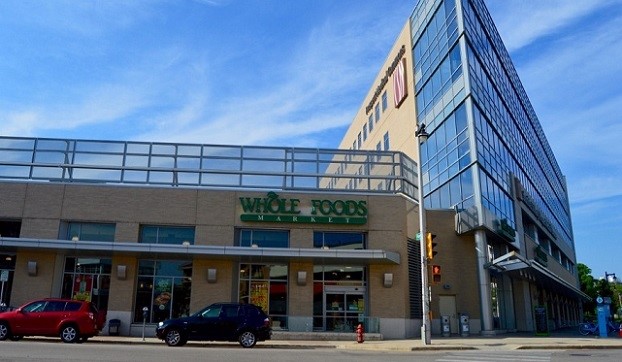 This Whole Foods has been doing good business for at least 10 years and has about 15 years left on its lease, making it quite attractive to many investors.
This Whole Foods has been doing good business for at least 10 years and has about 15 years left on its lease, making it quite attractive to many investors.
MILWAUKEE—Irgens, a Milwaukee-based real estate developer, has sold a 53,875-square-foot Whole Foods on the city’s East Side. The $22.2 million sales price equals $412 per square foot, a record for a net-leased grocery store in WI. And considering the recent changes in this city, the nation’s 32nd largest market, the level of interest in the property was not really a surprise.
“Milwaukee has seen a huge resurgence in the last five to seven years,” Adam Connor, a senior associate in Marcus & Millichap’s Milwaukee office, tells GlobeSt.com. Connor represented the seller. The buyer is a Seattle-based private investor and this is its first commercial real estate purchase in WI.
In addition to a new headquarters for Northwestern Mutual and a new arena for the Milwaukee Bucks, developers have built roughly 1,500 new apartments in the downtown area. As a result, the CBD has become a mecca for the millennial generation, and more companies are moving in to take advantage of the changes.
This particular Whole Foods, located at 2305 N. Prospect Ave., was opened ten years ago, and has proven itself a winner, Connor adds. Furthermore, it has about 15 years left on its lease, a big attraction to any potential buyer.
“The majority of interest came from out-of-state 1031 exchange buyers and the highest bidders were from NY and WA,” he says. Another factor that brings these buyers to secondary markets is the likelihood of securing better returns. A Whole Foods like this, for example, would probably generate a cap rate in the mid-fours if it was in San Francisco, but here in Milwaukee it goes for somewhere in the mid- to high-fives. There is, in fact, usually a spread of between 50 bps and 100 bps for such net lease retail outlets, although for multi-tenant shopping outlets, that spread usually goes higher.
“During the process, we navigated through market uncertainty and interest rate volatility,” he adds. “The 10-year US Treasury rose more than 100 bps points between the time of the initial offers and the closing.”

















 Copyright © 2024 ALM Global, LLC. All Rights Reserved.
Copyright © 2024 ALM Global, LLC. All Rights Reserved.